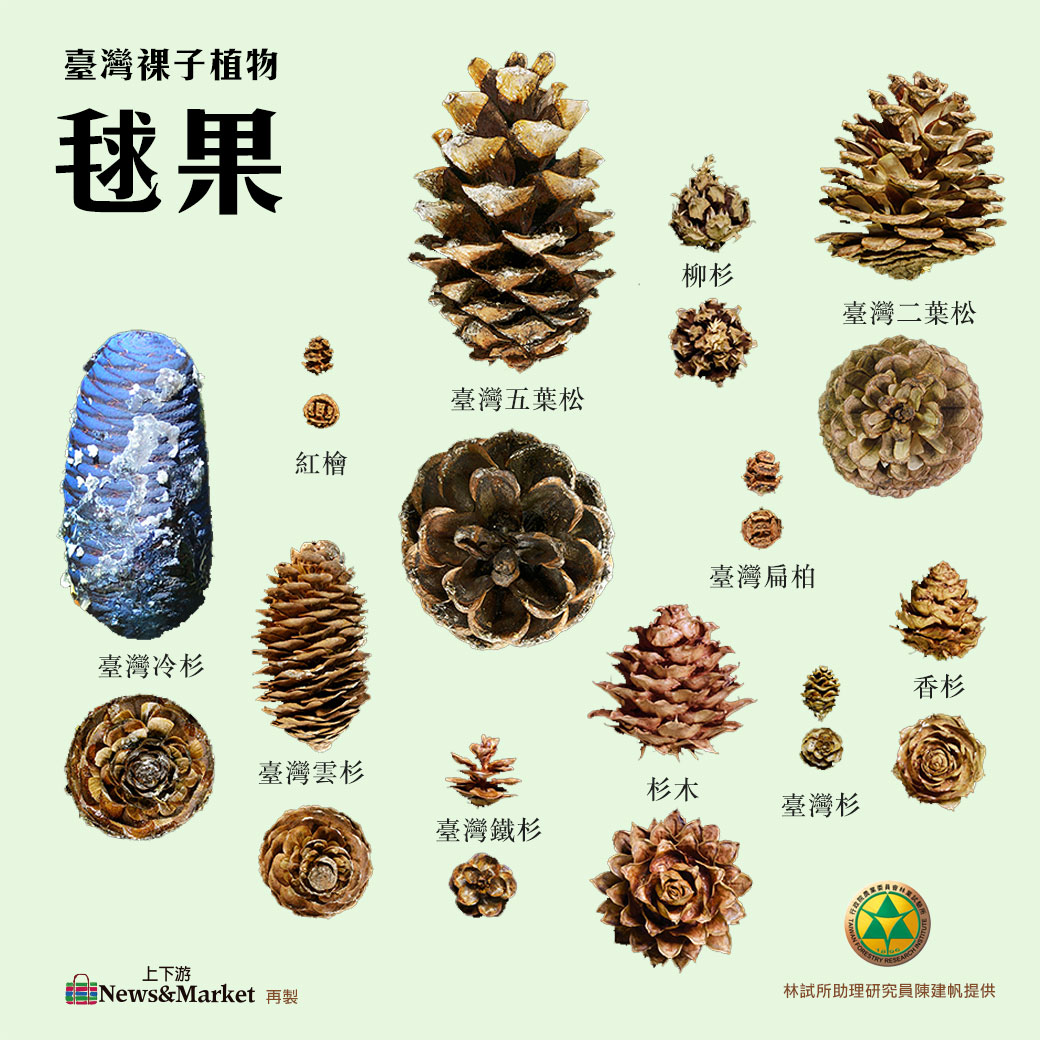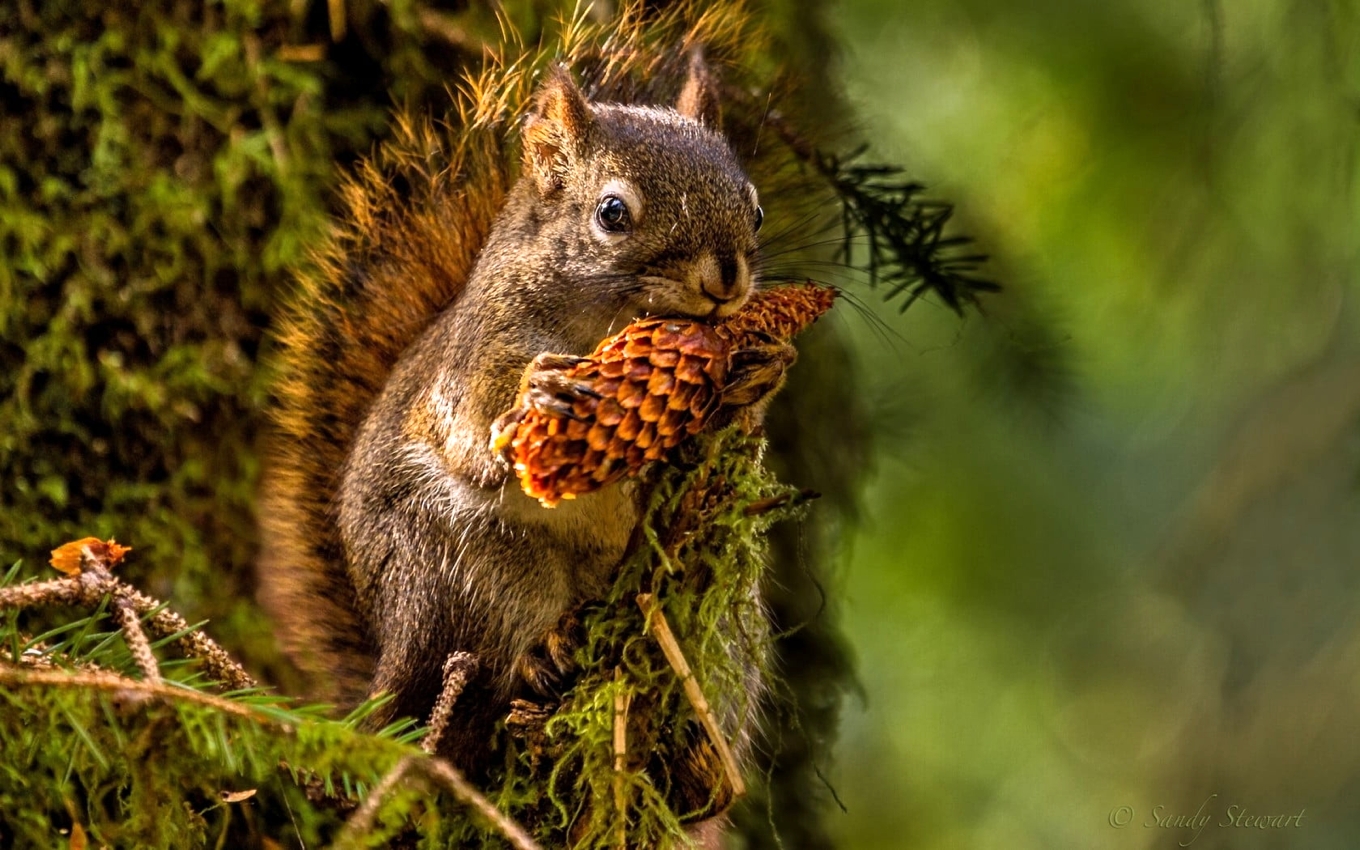Leave the cones to the forest, and there will be a perfect tree! The Taiwan fir that hit the moon began to grow from the big sesame seeds.
0share
Christmas is coming, dazzling decorations and wreaths, there are lovely pine cones (cones). What tree do these cones come from? What kind of secret does the unique shape contain? The cones, which are full of blessings, often have to go through suffering before they can thrive and fall to the ground. This contrasts with the tortuous growth process, according to Chen Chien-fan, an assistant researcher in the Botanical Garden Group of the Forest Research Institute.


Chen Jianfan, an assistant researcher in the botanical garden group of the Forest Research Institute, has studied and collected many cones and seeds for many years, and sorted the cone seeds for training volunteers (Photography / Lin Yijun) the cone sizes are very different, and the small cones of big trees are cute in contrast.
Chen Jianfan is usually a researcher who is not good at words, but the cone is the key to open the chatterbox. His research cabinet displays a large number of cones, with a list of more than 20 kinds, all of which he has collected over the years, some as big as arms and some as small as sesame seeds.
Chen Chien-fan did a theme tour for training volunteers and specially sorted out the common cones in Taiwan. the largest cone was Pinus elliottii, and the smallest cone was the giant tree-shaped Taiwan fir, red juniper, Taiwan flat cypress, and Xiao Nan. The seeds of Taiwan fir, the tallest in East Asia, are only as big as sesame seeds!
They are all cones. Why is there so much difference in size? "it's like different animals will be tall, short, fat and thin, and different groups of cones will certainly grow differently." Chen Jianfan said that this is the result of natural evolution. Cones are one of the fruit types with the largest number of gymnosperms. There are about 30 species of gymnosperms in Taiwan, which is one of the regions with the richest species in the world.


It is true that squirrels like to eat pine cones, and pine nuts that people eat are also cone seeds.
Cones or seeds that fall on the ground are also a source of food for squirrels and squirrels. Chen Jianfan said that although the cones do not look as fat and delicious as Fagaceae seeds, they are often seen in the forest to be gnawed "with only one fruit axis left."
Not only squirrels or other wild animals will bite off fruit scales and pick out seeds to eat, but middle-and high-altitude star crows will also eat Huashan pine seeds. Chen Jianfan said that the species wings of Huashan pine are not obvious and cannot be sent to the rock face by the wind, and the feeding of animals is most likely the reason why Huashan pine appears on steep rocks.
"the pine nuts that people eat are actually the seeds of cones." Chen Jianfan explained that most of the pine nuts that are often eaten by people come from Korean pine (Pinus koraiensis), which is widely cultivated in temperate zones. its seeds are larger and contain a large number of seeds, so they are specially selected for the production of "pine nuts".
The number of seeds contained in small cones is astonishing. In the case of red juniper and flat cypress in China alone, Matsuura Tso-Jiro, a Japanese, sampled in Taiping Mountain in 1942, calculated that Taiwan's flat cypress produced 790000 354 seeds a year, and red juniper produced 2.13 million 5362 seeds a year. It shows that gymnosperms have amazing vitality.


After eating pine cones, squirrels will only be left with the central fruit axis (picture taken from the network). Each has its own advantages in low, middle and high altitude. a large area of pure forest is related to cones.
Gymnosperms are divided into four categories: pine cypress gate, ephedra gate, cycad gate, ginkgo gate, of which pine and cypress is the most common group, which is divided into seven families, the best known are Pinaceae and Cypress (including Taxodiaceae). Taiwan's precious coniferous red juniper, flat cypress, Taiwan fir, Cunninghamia lanceolata, Xiaonan and Taxus mairei all belong to gymnosperms.
Gymnosperms prefer a cool growing environment, but different tree species still have their own preferences. For example, Taiwan fir, Taiwan hemlock and Taiwan spruce like to grow at middle and high elevations (more than 2000 meters); red juniper and Taiwan flat cypress are more common at middle elevations (1500 to 2000 meters); Taitung cycads, Taiwan ear fir, and Pinus elliottii are distributed at low elevations (1500 meters).
Chen Jianfan added that some gymnosperms are wide-ranging species, such as the Taiwanese two-leaf pine, which is widely distributed in low and middle elevations. Gymnosperms at low elevations are distributed in broad-leaved forests, while gymnosperms at middle and high elevations are easy to form a large area of pure forest, which makes people feel that "a few is beautiful" at a glance. The reason for this forest distribution lies in the cones.


Taiwan flat cypress (photo courtesy of Chen Jianfan) the cone is unique in shape and often goes through fire to reproduce.
The appearance of the cone is unique. Chen Jianfan explains that the typical cone is made up of layers of fruit scales. there are often bract scales on the outside of the fruit scales, and there are small seeds on the fruit scales. there is a gap between the fruit scales and the seed size. for example, the scale of the Taiwan pine is as big as a finger, but the seed that removes the wings is as small as a grain of rice. The seeds, on the other hand, have thin scaly wings that can be blown away by the wind.
Chen Chien-fan explains that when the cone is ripe, the scales will open and close because of the dryness of the environment. The cone will close when the water vapor is high, and open when the environment is dry, so when the environment is dry, it is the time for the cone to reproduce. He added that Taiwan is located in the subtropics, and the temperature is relatively high. When the cones are ripe and the environment is dry, they will slowly crack, and after cracking, they will be spread by the wind. But in countries in the middle and high latitudes where temperatures are relatively low, cones sometimes need "fire" to thrive.
The fire will cause the cones to crack, helping to release the seeds. But why doesn't the fire burn all the cones? Chen Jianfan said that because forest fires are usually ground fires, they burn out quickly, so they do not turn the cones into ashes.


Red juniper cones (photo courtesy of Chen Jianfan) debris flow is both a disaster and an opportunity, and the seeds grow into a pure forest
Cones need to dry or even fire to open, and seeds need open space for germination and growth. for example, seeds of Pinus taiwanensis will germinate quickly once they land in a flat and wide area. Chen Chien-fan explains that in recent years, a survey of plant renewal on collapsed sites in central Taiwan has found that conifers may need to rely on collapses or forest disturbances for their continued growth and regeneration in Taiwan's mountain forests.
Chen Chien-fan further explains that he has observed the middle and high elevations where spruce, hemlock, fir, and Taiwan two-leaf pines grow, and small seedlings often appear on the bare ground of landslides. He speculates that a large area has been cleared because of collapse or forest disturbance, which is suitable for seeds to germinate and grow smoothly. "if it falls on woodland, even if the seeds germinate, it is very difficult to compete with other trees for light and do not grow well, so they expand rapidly in open areas."
Chen Jianfan said that compared with Fagaceae seeds, which are rich in starch and can survive under the forest and wait for the right time for rapid growth, cone seeds have scaly wings, which are functionally more similar to pioneer species spread by the wind, and the seeds themselves are smaller. After falling on gravel or soil with the wind, nutrients must be quickly absorbed from the soil after germination.
[you may also like this article] Totoro gives her sister acorns, and there are many forests in Taiwan! Forty-five Fagaceae families, Lin Miqing affectionately recorded


Young Taiwan spruce trees and Taiwan two-leaf pines are renewing on the collapse site at the same time (photo courtesy of Chen Jianfan) the cypress needs an open environment, and the flat cypress can grow as long as it has a little space.
"but if the deciduous layer on the surface of the soil is too thick and the roots of the seeds can't touch the soil, it's very difficult to grow up!" Chen Jianfan said that large areas of landslides and landslides can clean up the litter layer at the same time, allowing gymnosperms to grow more smoothly. Zeng Yanxue, a professor of forestry at Chung Hsing University, has also studied spruce forests and found that falling trees or small area collapses can promote forest renewal.
Besides spruce, there are also red junipers that depend on landslides and landslides. Juniper plants are only found in North America, Japan and Taiwan, and red juniper has been discovered by tree scholar Jin Pingliang.
- Prev

The newly created base of medium block chain industry, "N24 Taipei Ark", opens.
Taipei Mayor Ke Wenzhe attended the press conference on the opening of the N24 Taipei Ark (N24ARK.TPE) on the 24th. In order to tie in with the Eastern District Gateway Plan, Taipei-Yu Nangang will build a new industrial corridor, linking Neihu Science and Technology Park and Nangang Economic and Trade Park to promote construction.
- Next

Save Shi Hu's home! Miaoli biography will skip ecological review, closed-door meeting "Joe" optoelectronic development, Shihu Association: refuse to give and accept in private
Save Shi Hu's home! Miaoli biography will skip ecological review, closed-door meeting "Joe" optoelectronic development, Shihu Association: refuse to give and accept in private
Related
- A course of planting techniques and methods on how to grow carrots
- How to plant the latest tulips?
- Is it better to pick tea in the morning or in the afternoon? When is the best time for tea to be picked? what is the third or fifth tea?
- Launch Yuanxiao Happy combination Haocha + Tea Yuan healthy Taste
- Penghu Tourism "Fireworks 20 Parade with You"
- 2022 West Lake Happiness holds "Digital Revitalization Voucher" and draws iphone13 and laptop.
- Banqiao Fuzhou social houses are designed to change start-up combined with police elimination to create a safe and livable environment
- The convenient measure of "mechanical weeding" in Xinbei has been abused and the Agriculture Bureau has imposed heavy penalties on the illegal land consolidation.
- Changgeng University Joins Hands with Four Memory Factories to Rescue Memory Talent Shortage
- The list of Taiwan's top 100 MVP managers is listed by the Director-General of the Farmers' Association of Sanxia District.

